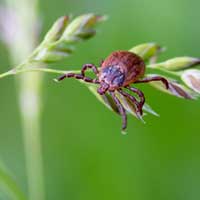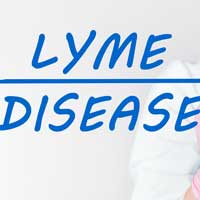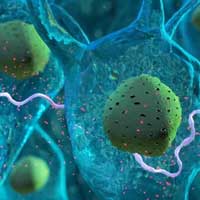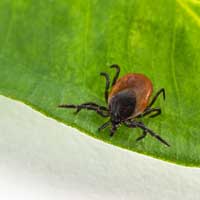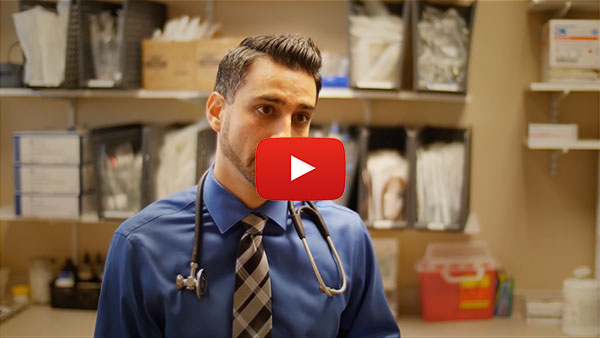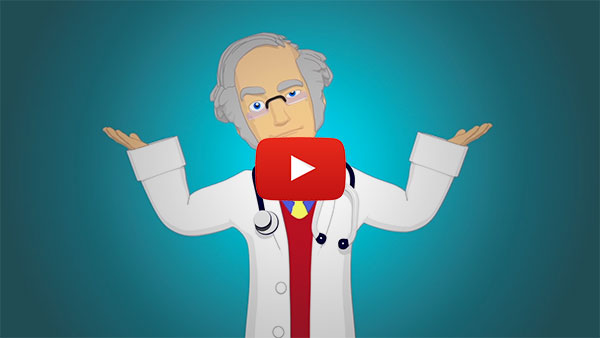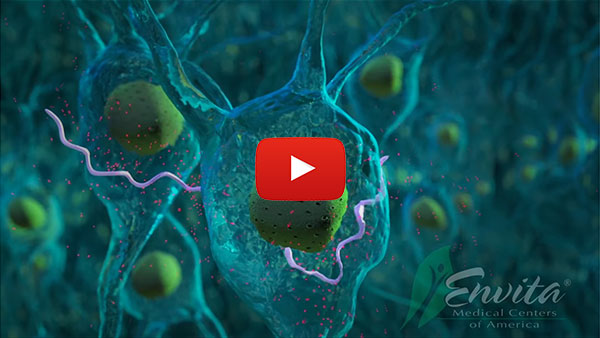Babesiosis and Lyme Disease: Potential Coinfections?

A seemingly harmless bout of myalgias, abdominal pain, or high fever may be symptoms of tick-borne infectious diseases like Babesiosis or Lyme disease. These diseases are caused by different pathogens, such as Babesia microti, Babesia divergens, and Borrelia burgdorferi, but they may manifest as coinfections which can lead to debilitating or life-threatening conditions.
In fact, a 2016 study shows the coinfection Babesia microti causes greater disease severity and duration when transmitted along with the Lyme disease bacteria Borrelia burgdorferi [1]. According to the Centers for Disease Control and Prevention (CDC), b. microti, is responsible for most cases of human babesiosis in the United States, while b. burgdorferi is the primary cause of Lyme disease.
What is Babesiosis?
Babesiosis is a parasitic infection of the red blood cells (erythrocytes), and it can affect both animals and humans. It is caused by different strains of the Babesia species, however, Babesia microti and Babesia divergens are the two most common strains that trigger cases of babesiosis in humans. In the United States, B.microti is the main etiologic agent of human babesiosis, while variants like B.divergens are dominant in some other parts of the world.
What is Lyme Disease
Lyme disease is a bacterial infection which can affect both animals and humans. It is caused by different strains of a bacterium called Borrelia, however, Borrelia burgdorferi is the most common strain that triggers cases of Lyme disease in Americans.
Similarities Between Babesiosis and Lyme Disease
- Both the diseases share an epidemiological similarity as they can be caused by a single tick-bite.
- The deer tick (Ixodes Scapularis) is the common vector, which may carry both Babesia and Borrelia pathogens.
- Both disease-causing pathogens have long incubation periods, which is why symptoms may show up months or years after the bite.
- Certain initial symptoms of babesiosis such as aches and pain, myalgia, high fever and sweats, are similar to those of Lyme disease.
- Both the diseases may be difficult to diagnose via standard tests such as blood smear, serologic tests, and polymerase chain reaction (PCR) tests.
- Both the diseases are said to be common in the New England, Northeast, and upper Midwest regions including the states and cities of Massachusetts, New Jersey, New York, Long Island, Minnesota, and Wisconsin, but they are not always limited to these endemic areas alone.
- Both are relatively new diseases in the United States with the first documented case of Babesiosis being reported in 1969 from Nantucket Island, Massachusetts, and the first documented case of Lyme disease being reported in 1975 from Lyme, Connecticut.
Differences Between Babesiosis and Lyme Disease
- Babesiosis
-
- Babesiosis is caused by a parasite.
-
- CDC recommends at least 7-10 days treatment with a combination of two prescription medications — typically either: Atovaquone with Azithromycin, or Clindamycin with Quinine, depending on severity of the disease.
-
- Severe babesiosis leads to hemolytic anemia, thrombocytopenia (blood platelet deficiency), unstable blood pressure, and kidney or other organ failure.
-
- According to CDC, it is transmissible through blood transfusion and babesiosis is the most frequently reported transfusion-transmitted parasitic infection in the U.S.
- Lyme Disease
-
- Lyme disease is caused by a bacterium.
-
- CDC recommends 10 to 28 days treatment with antibiotics such as Doxycycline, Amoxicillin, or Cefuroxime, depending on severity of the disease.
-
- Severe Lyme disease affects the central nervous system causing brain fog, memory loss, and seizures.
-
- According to the CDC, no reported cases of Lyme disease have been linked to blood transfusion, but scientists have found that the bacteria can live in blood samples drawn for donation from a person with an active infection.
What Causes Babesiosis and Lyme Disease Coinfections?
Both Babesiosis and Lyme disease can manifest as coinfections if the deer tick which bites a human is infected by both the pathogens B. microti and B.burgdorferi. In fact, deer ticks are known to harbor a host of different pathogens, which is why when an infected deer tick bites a human, it may transmit either one or more infections causing Lyme disease, Babesiosis, Bartonellosis, Colorado Tick Fever, Anaplasmosis, and Human Granulocytic Ehrlichiosis or Human Monocytic Ehrlichiosis. All these diseases may either manifest independently or co-exist in combinations of two or more co-infections.
Disclaimer: Individual results will vary. Envita makes no guarantees for outcomes. Each patient case is unique. Please consult your doctor before making any changes to your medical treatment. Not every patient is a candidate for care or achieves these results. Treatments used in this case may not all be FDA approved for the treatment of this condition.
A published study by Envita Medical Centers, a world-class center of excellence for Lyme disease treatment, highlights Babesiosis as one of the most common co-infections of Lyme disease [2]. Both these diseases need to be treated differently, which is why an accurate diagnosis is crucial to help patients overcome their persistent symptoms of malaise.
In their clinical experience of over 25 years, the Lyme Literate Doctors at Envita have helped thousands of patients with multiple coinfections who were earlier left with no treatment as their standard healthcare providers could not diagnose these lurking infections.
Challenges in Diagnosis of Babesiosis and Lyme Disease
The standard healthcare diagnostics for Babesiosis and Lyme disease may not always be accurate as low parasitemia count or a weak immune system may lead to false negative results. Microscopic analysis of blood smears is one of the diagnostic options for Babesiosis, however, this procedure may not show accurate results due to a low level of parasitemia in blood samples, especially in the early stage of disease.
Other serologic tests such as Immunofluorescence Antibody (IFA) of IgM and IgG antibodies are sometimes employed to confirm a babesiosis diagnosis, but a weakened immune system may not always produce antibodies, which may lead to a false negative result. In fact, a recent medical study titled “Persistence of Babesia microti Infection in Humans” states that Babesia parasites employ a number of evasive measures to avoid an immune attack, which leads to persistent B. microti infection, even when immune function is intact [3]. This study also explains how Babesia can develop resistance to antiparasitic drugs, including the two standard combinations of atovaquone and azithromycin, and clindamycin and quinine, which is why integrative treatments combining conventional and natural medications may be more effective in treating this infection.
Diagnosis of Lyme disease is also based on antibody tests such as ELISA (Enzyme Linked Immunosorbent Assay) and Western Blot, which may not reveal accurate results if the patient is immunocompromised. This dependence on antibodies to diagnose Lyme disease explains why many patients remain undiagnosed via standard healthcare tests.
Overcoming Challenges of Standard Testing
To diagnose symptoms, Envita Medical Centers, utilizes its proprietary test called PathoDNA, which is based on Next-Generation Sequencing (NGS) technology. Recent scientific research also proves that this test achieves accuracy rates of 98% for B. burgdorferi and 95% or greater for other common tick-borne pathogens with superior sensitivity and selectivity [4].
This proprietary test has the potential to directly measure the amount of infectious disease related DNA in a blood or urine sample, instead of relying on the patient's immune system to produce antibodies for appropriate disease detection. PathoDNA is a hypothesis-free testing, which drastically speeds up the diagnosis process for physicians since there would not be a need to test for each potential infection individually or wait for results before submitting subsequent tests.
New Treatments Integrating Conventional and Natural Medicines
According to scientific research published in the Open Journal of Medical Microbiology, the persistent symptoms of chronic Lyme Disease are related to immune evasion and antibiotic resistance of b.burgdorferi, similar to the attributes of b.microti [5]. To overcome the drug resistance mechanisms of these pathogens and help patients recover holistically, Envita utilizes a powerful blend of innovative conventional and alternative treatments.
The expert team of doctors also personalize treatment for each individual patient, by utilizing custom-compounded medications from their in-house pharmacy. Personalization is crucial for tackling diseases like babesiosis and Lyme disease, which have a high potential of accompanying coinfections.
To ensure better efficacy of their powerful personalized medications, team Envita utilizes various proprietary technologies such as IRAD (Insulin Receptor Antibiotic Delivery), which is especially helpful in complicated cases of Lyme disease and other coinfections where neurological symptoms are exhibited. Following are some of the benefits of IRAD, which have proven helpful for patients who were unresponsive to earlier treatments:
- It overcomes the limitations of oral medications, which are unable to impact pathogens once they cross the blood-brain barrier.
- Envita's IRAD is a deeper delivery of targeted antibiotics, patient-specific adjuvant immunotherapies, and customized natural medicines for the comprehensive treatment of neurological conditions attributed to Lyme disease and other chronic infections.
- IRAD helps shuttle antibiotics and Envita's personalized treatments past the blood brain barrier to directly impact the affected area and stimulate healing.
Take a Tour of Envita Medical Centers
Tickborne infectious diseases like Babesiosis and Lyme disease, which often manifest as coinfections, require accurate diagnosis and personalized combination treatments to prevent serious complications. If you or your loved ones have any questions about Babesiosis, Lyme disease, or any other tick-borne disease, please do not hesitate to ask us. We have a dedicated team who can help answer any specific questions you may have as well as provide more in-depth educational material to help you make the right decisions when it comes to comprehensive treatment.
Choose Envita Medical Centers
Call NowOur team is ready to help you get your life back! Please enter your contact information and a Patient Care Expert will contact you shortly. If you would rather speak now, please give us a call at 866-830-4576.










